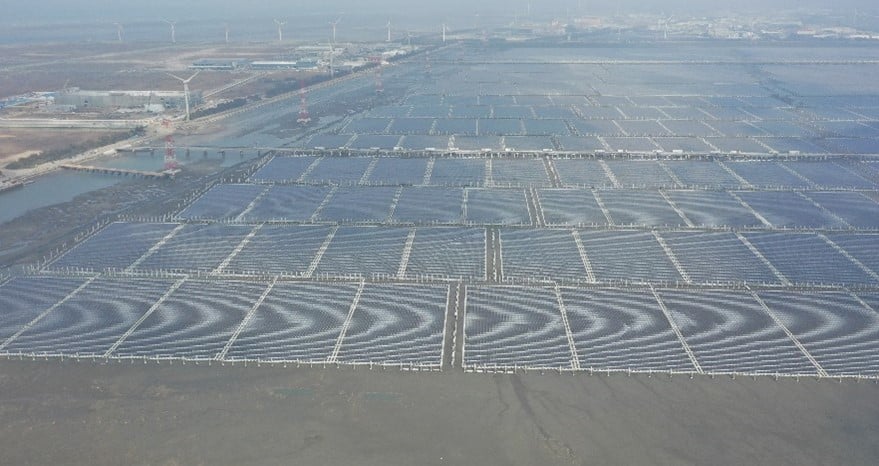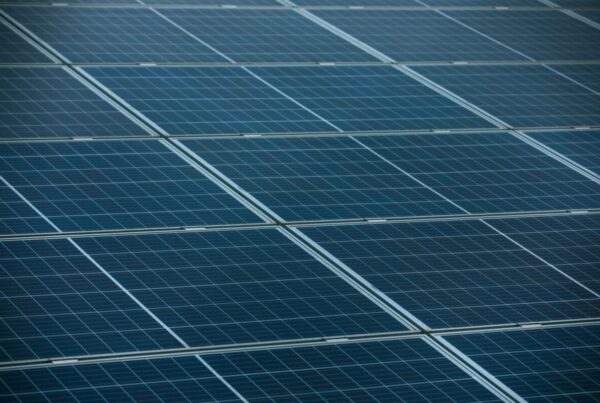
The entire completed FPV project in the Changbin industrial zone is about 440MWp, with Ciel & Terre Taiwan representing 280MWp. In total, the project generates 260GWh of power annually.
Ciel & Terre Taiwan said the design of the FPV platform and the anchoring of the solar arrays had been the biggest challenges when developing Changbin #3 and #4. In collaboration with HEXA Renewables, Ciel & Terre Taiwan developed a customised floating solar solution, including an upgraded spreader bar and fixation parts, and a reinforced connection pin to strengthen the material to resist wave conditions.
Moreover, Ciel & Terre Taiwan claimed that Changbin #3 and #4 were the first large-scale FPV project to use concrete pillars and H-beam systems for anchoring. Both companies also co-designed a patented technology to limit the movement of modules, reducing the extrusion risk during water variation to keep the FPV plant at its location at all times and in all conditions.
Last year, energy analyst Wood Mackenzie published a report analysing global FPV installations by 2031. Taiwan will be the seventh largest market in the world with a total capacity of 3,179MW, behind Thailand and Vietnam (both 3,265MW).
In Indonesia, Indonesian state utility PLN and UAE state-run renewables developer Masdar inaugurated the 145MWac (192MWp) Cirata floating solar PV (FPV) plant in the West Java province of Indonesia in November 2023. Both companies claimed the plant is the largest FPV site in Southeast Asia, a region that leads the world in FPV deployments.





